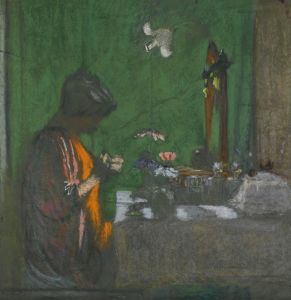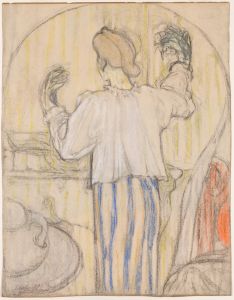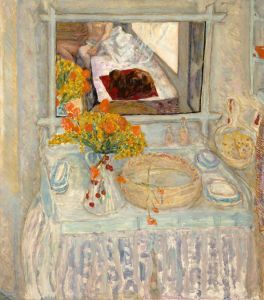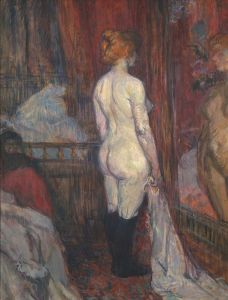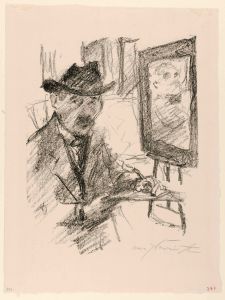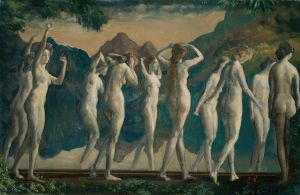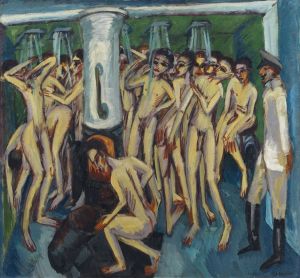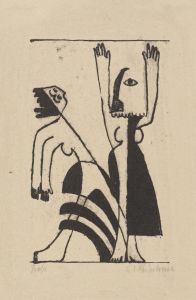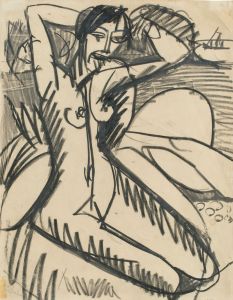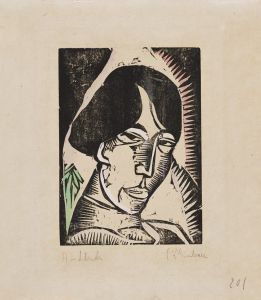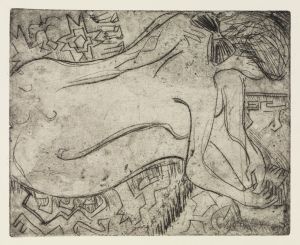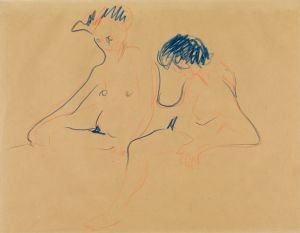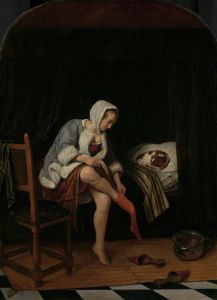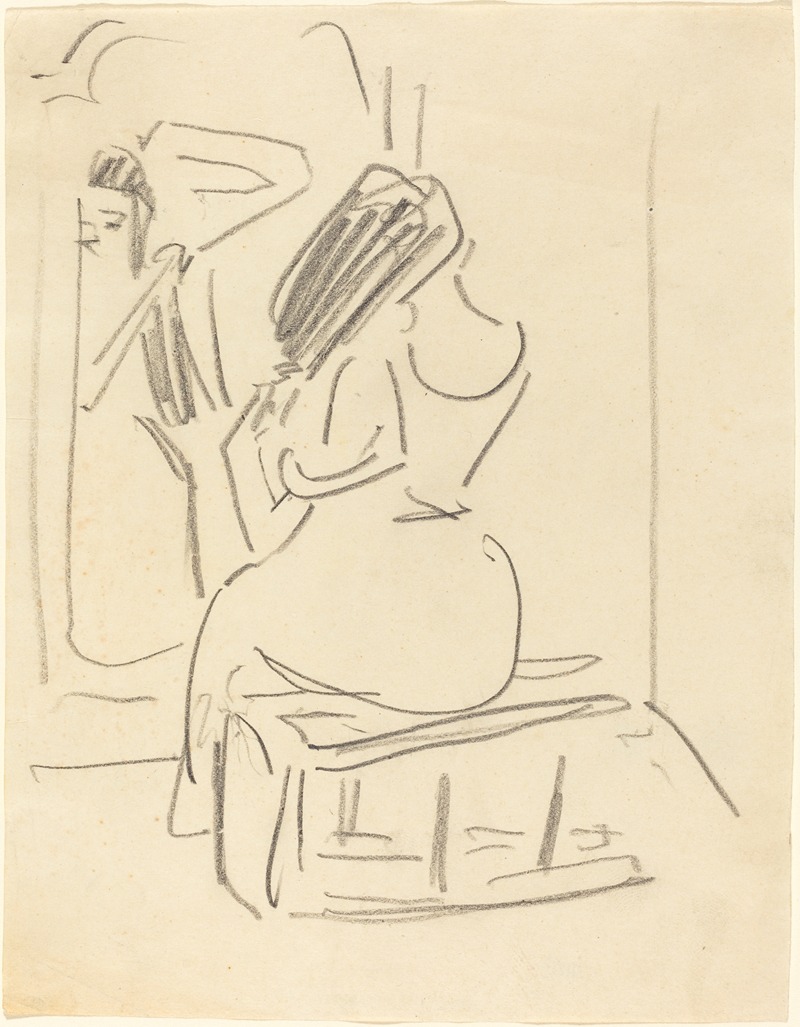
A Woman Combing Her Hair in Front of a Mirror
A hand-painted replica of Ernst Ludwig Kirchner’s masterpiece A Woman Combing Her Hair in Front of a Mirror, meticulously crafted by professional artists to capture the true essence of the original. Each piece is created with museum-quality canvas and rare mineral pigments, carefully painted by experienced artists with delicate brushstrokes and rich, layered colors to perfectly recreate the texture of the original artwork. Unlike machine-printed reproductions, this hand-painted version brings the painting to life, infused with the artist’s emotions and skill in every stroke. Whether for personal collection or home decoration, it instantly elevates the artistic atmosphere of any space.
Ernst Ludwig Kirchner's painting A Woman Combing Her Hair in Front of a Mirror is a work by the German Expressionist artist, who was a founding member of the influential art movement Die Brücke (The Bridge). Kirchner, known for his bold use of color and dynamic compositions, often explored themes of modern life, urban settings, and the human figure. This particular painting reflects his interest in intimate, everyday moments, as well as his distinctive style that combines emotional intensity with a focus on form and movement.
The artwork depicts a woman engaged in the private act of combing her hair while standing in front of a mirror. This subject matter aligns with Kirchner's frequent focus on the female figure, often portrayed in domestic or personal settings. The painting is characterized by its vibrant, non-naturalistic colors and expressive brushstrokes, hallmarks of Kirchner's style. These elements convey a sense of immediacy and emotional resonance, emphasizing the psychological depth of the scene rather than a realistic depiction.
Kirchner's works often reflect the influence of non-Western art, particularly African and Oceanic art, which he admired for its perceived authenticity and raw expressiveness. This influence can be seen in the simplified forms and exaggerated features of the figure in this painting. Additionally, the use of bold outlines and flattened perspectives demonstrates Kirchner's departure from traditional European artistic conventions, aligning with the broader goals of the Expressionist movement to challenge established norms and convey inner experiences.
The exact date of creation for A Woman Combing Her Hair in Front of a Mirror is not definitively documented, but it likely falls within Kirchner's most prolific period, between 1905 and 1915, when he was actively involved with Die Brücke. During this time, Kirchner and his contemporaries sought to capture the vitality and tensions of modern life, often through scenes of urban environments and private interiors.
Kirchner's career was deeply affected by the political and social upheavals of the early 20th century, including World War I and the rise of the Nazi regime in Germany. His art was labeled "degenerate" by the Nazis, and many of his works were confiscated or destroyed. Despite these challenges, Kirchner remains a central figure in the history of modern art, and his works continue to be celebrated for their innovative approach and emotional power.
Further details about the specific provenance or current location of A Woman Combing Her Hair in Front of a Mirror are not readily available. However, it is representative of Kirchner's broader body of work, which is held in major collections worldwide, including the Brücke Museum in Berlin and other prominent institutions.





